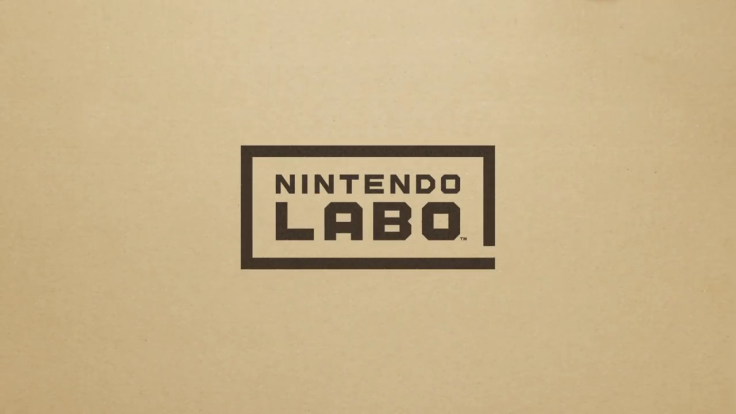Nintendo Labo: 5 Reasons The Pricey Switch Cardboard Kits May Fail

Nintendo Labo was announced earlier this week, and the cardboard kits are essentially Nintendo’s answer to the emerging STEM toy market. While it’s a unique way to make use of the popular Switch hardware, here are five reasons this pricey product may fail.
1) High Prices: Quite possibly the biggest thing holding Labo back from mainstream success is the kits’ insane launch prices. The initiative starts with the Variety Pack at $69. While that set offers six different templates, it costs even less than the $79 Robot Kit. That’s out of range for most households and educational licensing scenarios.
Especially considering Labo requires a $299 Nintendo Switch, those prices are a huge ask. Kid-friendly games like Mario Kart 8 Deluxe or Mario+Rabbids can be purchased for $40 on sale and will likely offer many more hours of enjoyment. With that in mind, it’s insane to think most folks would pay double the price for a novelty idea. If Nintendo wants Labo to be a success, it must introduce smaller-scale projects priced within an impulse-buy range. Like many Nintendo Switch accessories, Labo costs way too much.
2) It’s Very Breakable: While we don’t doubt Nintendo has designed Labo around some very sturdy cardboard, the fact remains that it’s still cardboard. In other words, that $79 Robot kit is extremely susceptible to spills, tears, pet damage and other household mishaps. As soon as any of that likely stuff happens, all enjoyment is nearly lost. Nintendo says you can use extraneous cardboard pieces to replace broken ones, but free replacements aren’t happening.
Given the industrial designs featured across Nintendo’s 3DS lineup, the sheer flimsiness of Labo is a bit strange. It’s a product built for kids, but it probably won’t withstand them. Questions of endurance are exactly why Legos are made of hard plastic. Despite Nintendo’s best efforts, Labo will break under much less stress.
3) The Switch Isn’t Really Built For Kids : There’s no denying the Switch has a robust library of family-friendly games, but the device itself isn’t necessarily conducive to the kind of torture from a 6 or 7-year-old that a Labo project requires. It means you’ll be sliding Joy-Con every which way and putting the console’s exposed tablet screen in any number of positions.

The adult reading this article will have no problem with that, but trying to teach a young child how to effectively take care of expensive hardware is always going to be difficult. At least while playing a traditional game a Switch can stay in its dock. With Labo you’re literally dragging and pulling it around the house in homemade containers it wasn’t totally designed for. Especially in situations where you may be sharing a Switch with your son or daughter, the risk may be too great.
4) Labo Is Easily Exploitable: In addition to any free official Labo templates that may or may not be released, you can bet there will be a large online community doing more creative stuff with it. You can’t patent these designs, so subreddits and Discords will be full of cheaper ways to make the most of the software. When that happens Nintendo’s profit margin on Labo kits is severely diminished. It’s good for consumers and bad for Nintendo.
Once a project breaks or a replacement kit is purchased, there will be no need for the extra software cartridge. After that Labo games can be sold on Ebay and then constructed with an online template. Nintendo will make some money on Labo software sold as digital downloads, but not as much as if someone purchased another complete set. Simply put, there are lots of ways for Nintendo to lose.
4) Lack Of Compelling Software: On top of all that, it’s hard to ignore the fact that the software involved doesn’t look very good. Sure it’s a really cool novelty to play a few notes on the piano or punch a few robots, but a Labo game will never offer the depth or shelf life of Super Mario Odyssey or Breath Of The Wild.
In some ways the appeal of a Labo experience will be similar to the short-term VR experiences across Oculus, Vive and PlayStation VR. It’ll be really fun for a few hours, but most kids will have moved on to other Switch games shortly thereafter. Parents won’t spend that much money on short-term fun.
Those are my thoughts, but what are yours? Will Labo prove to be a success? Are any of these factors holding you back? Tell us in the comments section!
© Copyright IBTimes 2024. All rights reserved.











